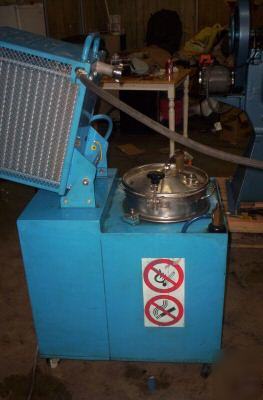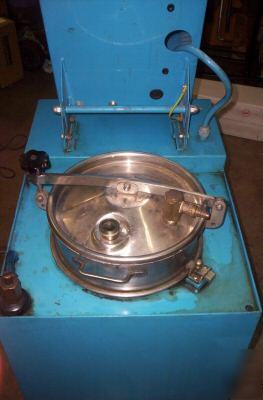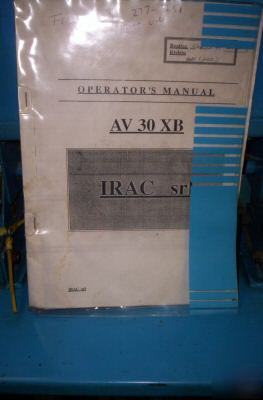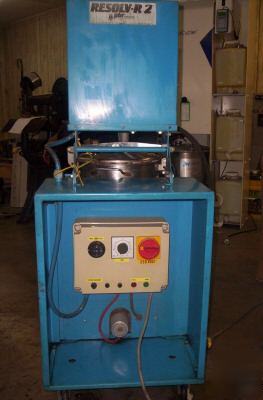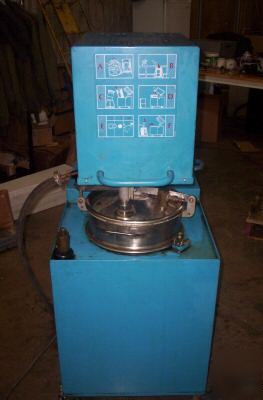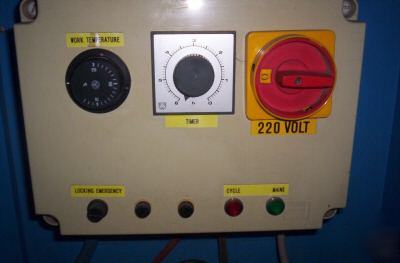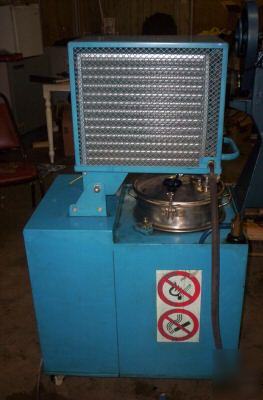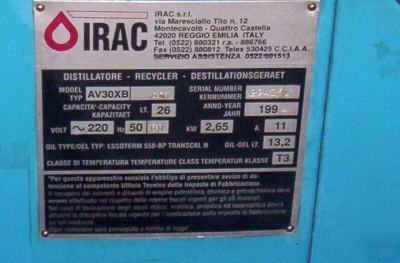Rockford Industrial Area Revival Project - Moderated newsgroup > Industrial high power Electronics
> Rockford
> Airport Area
> Irac av 30 xb solvent recovery distillation evaporator
Irac av 30 xb solvent recovery distillation evaporator
Irac av 30 xb solvent recovery distillation evaporator
From: Chad Mckinney
Subject Irac av 30 xb solvent recovery distillation evaporator
I have for sale one used Irac Model AV 30 XB Solvent Recovery Machine, it is in good working order with new diathermic heating oil. I also have the operator's manual in book form.
Solvents play a vital role in many processes across a wide range of industries. The rising cost of solvents, and the increasingly stringent regulations covering their disposal has caused many organisations to review their procedures to see if some economies can be made.
* Reduction in new solvent purchase of up to 80%
* Savings of 90% in disposal costs
* Payback period of a few months
* Reduced storage space for new and used solvent
In addition, VOC emissions have been greatly reduced, improving the environment in the workplace and beyond. It’s definitely a win-win situation!
Waste solvent is deposited into a removable tank fitted with a disposable heat-resistant bag. When full, the tank is placed in a thermostatically controlled bath and heated. This evaporates the solvent, leaving the residue in the tank, and the vapour is passed through an air-cooled condenser, from where the pure, re-usable solvent drains into a storage drum. The process is enclosed, minimising VOC emissions.
IRAC - How it works diagram. To enlarge image click here.
Once the solvent is fully distilled, the bath is switched off and the tank can be removed and allowed to cool. Another fully charged tank can then be inserted, to maintain maximum throughput. (In other systems, a period of several hours is required to allow the fixed evaporator tank to be recharged.) When the tank is cool, the bag containing the non-hazardous residue can be removed and disposed of normally.
Any industry that involves processes which use solvents. For example, painting and finishing, glass fibre fabrication, wood and metal, printing. Typical solvents include acetone, methylene chloride, gunwash and paint thinners.
Maximum evaporation temperature is 180°C, but solvents with higher boiling temperatures (for example those used for manufacturing screen inks), can be handled by adding a vacuum unit.
The recovered solvent can be re-cycled many times over, greatly reducing the demand for new solvent. Storage space is also reduced, both for new solvent and waste material awaiting
Contact: chad-mckinney@rockford-industrial.com (Chad Mckinney)
